How to prevent Scheppach Power Tool engine from overheating?
- JJohn GatesSep 9, 2025
To prevent your Scheppach Power Tool engine from overheating: * Clean the air cleaner. * Remove the housing and clean to ensure airflow is not restricted.
How to prevent Scheppach Power Tool engine from overheating?
To prevent your Scheppach Power Tool engine from overheating: * Clean the air cleaner. * Remove the housing and clean to ensure airflow is not restricted.
What to do if Scheppach Power Tool engine won't stop?
If your Scheppach Power Tool engine will not stop when the throttle control is positioned at stop, clean any dirt and debris interfering with the throttle linkage.
Why is my Scheppach Power Tool compactor difficult to control?
If your Scheppach Power Tool compactor is difficult to control during pounding, and the machine jumps or lurches forward, it might be due to: * Engine speed being too high on hard ground: Set the throttle lever at a lower speed.
How to fix no compacting function in Scheppach Power Tool?
If your Scheppach Power Tool has no compacting function or the plate compactor doesn't reach maximum speed, adjust or replace the drive belt if it is too loose and slips on the pulley.
| Motor Power (P1) | 1800 W |
|---|---|
| Motor Type | Induction motor |
| Weight | 11.5 kg |
| Motor Power | 1800 W |
| Pump Type | Aluminum |
Company name and address of the manufacturer.
Welcomes the customer and provides recommendations for using the manual.
Lists and identifies all parts of the plate compactor with figure references.
Details all items included in the package, such as the compactor and accessories.
Describes the specific uses and benefits of the plate compactor for soil compaction.
Specifies materials like cohesive soils or concrete where the compactor should not be used.
Covers understanding the machine, controls, and safe operation practices.
Outlines precautions for the environment where the machine is operated.
Details protective clothing, footwear, and general body safety measures.
Provides guidelines for safe handling, storage, and use of fuel.
Covers safe practices for machine use, maintenance, and avoiding damage.
Safety advice for performing maintenance or servicing on the machine.
Instructions to keep hands, fingers, and feet away from moving parts.
Advice on operating position, avoiding hazards, and slope operation.
Discusses inherent risks that may remain despite precautions.
Lists technical details of the engine, such as displacement and power.
Details compactor performance metrics like compaction pressure and travel speed.
Provides information on noise levels and vibration characteristics of the compactor.
Steps for carefully removing the compactor from its packaging.
Instructions for checking the device and accessories for transport damage.
Advises reading the manual and using original parts for familiarization.
Step-by-step guide to fitting the handle to the compactor.
Instructions for attaching the rubber pad to the base plate.
Guide on how to attach the transport fixture for moving the unit.
Essential checks to perform before starting the machine.
Procedure for checking and topping up engine oil levels.
Guidance on checking and filling the fuel tank with appropriate gasoline.
Detailed steps for starting the engine, including choke usage.
Correct procedure for stopping the engine safely.
Recommends setting idle speed when not compacting to conserve fuel and reduce noise.
Advice on cleaning the compactor after each use.
Specific instructions for cleaning the bottom of the compactor base.
Caution against using pressure washers due to potential damage.
Information on safely transporting the machine, including weight and wheel kit use.
Guidelines for safely lifting and securing the compactor for transport.
Steps to prepare the compactor for storage longer than 30 days.
Detailed instructions on how to drain the fuel tank for storage.
Recommendations for storing the compactor in a suitable location.
Safety precautions and general checks before performing maintenance.
Instructions for inspecting and replacing the V-belt.
Procedure for changing the oil in the exciter unit.
Guidelines for changing the engine oil, including intervals.
Steps for cleaning or replacing the air filter.
Instructions for cleaning and replacing the spark plug.
Steps for cleaning the float chamber, ensuring the engine is cold.
Information on recycling or reusing packaging materials.
Guidance on disposing of defective components and the machine responsibly.
Addresses common causes and solutions for engine not starting.
Solutions for erratic engine operation, overheating, or speed problems.
Troubleshooting for difficult control, lack of compaction, or low speed.
Addresses issues related to oil loss from the engine or exciter.
Statement by the manufacturer confirming product conformity to EU directives.
Details of the product, including brand, article name, and number.
Lists the specific EU directives and standards the product meets.
Cites the harmonized standards used for conformity assessment.
Outlines the warranty terms and conditions in German.
Details the warranty terms and conditions in English.
Summarizes warranty terms in other languages like Estonian, Latvian, Lithuanian, Swedish, Finnish, Danish.


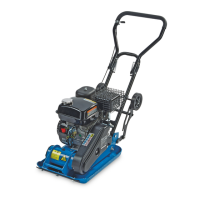
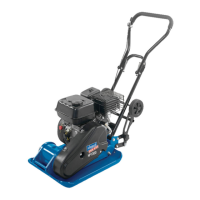
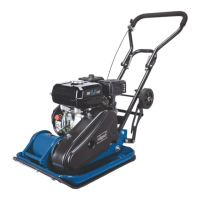

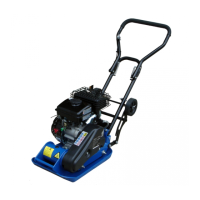
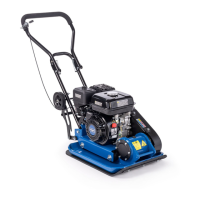
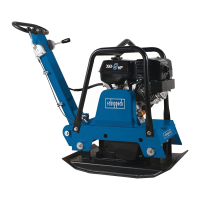
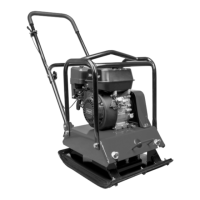

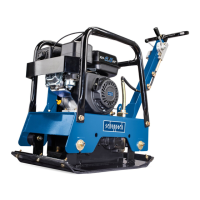
